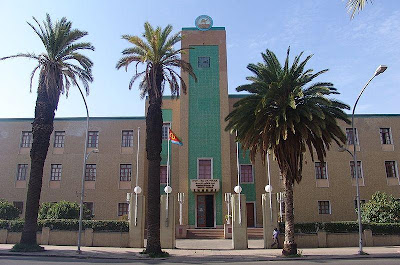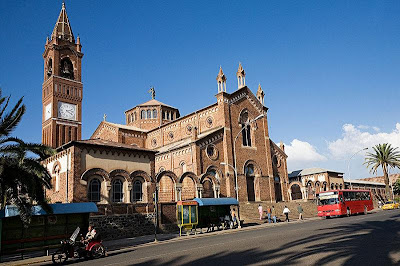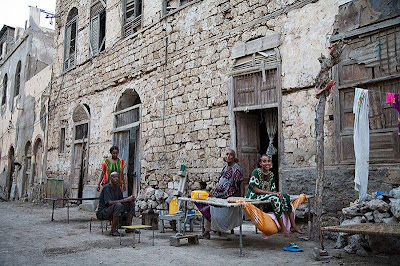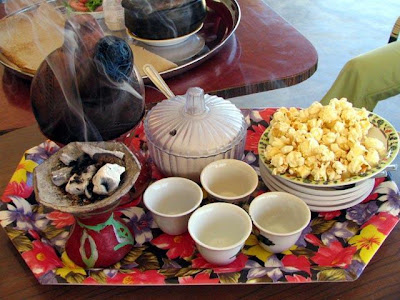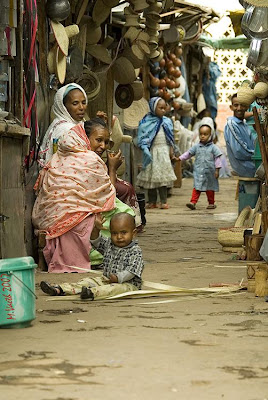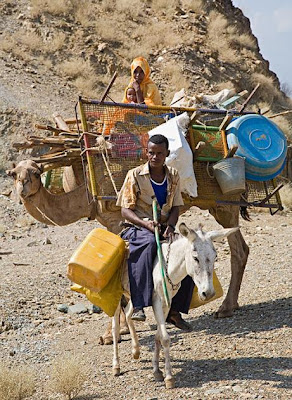 Eritrea is located in Eastern Africa in the Horn of Africa, to the North of Ethiopia and bordering the Red Sea in Northeast. It has a mixed Afro-Asiatic population that is divided by religion and language. Eritrea is one of Africa's newest independent nations. The former Italian and British colony gained formal independence from Ethiopia, its last colonizer, in 1993. But independence did not end the wars in Eritrea. Conflicts with Yemen and Ethiopia followed.
Eritrea is located in Eastern Africa in the Horn of Africa, to the North of Ethiopia and bordering the Red Sea in Northeast. It has a mixed Afro-Asiatic population that is divided by religion and language. Eritrea is one of Africa's newest independent nations. The former Italian and British colony gained formal independence from Ethiopia, its last colonizer, in 1993. But independence did not end the wars in Eritrea. Conflicts with Yemen and Ethiopia followed.Latest UN reports (2005) warned that the humanitarian situation in Eritrea was deteriorating, mainly due to recurrent drought and the protracted stalemate in the peace process with Ethiopia
African //Agordat men
Asmara//Gashbarka houses
Asmara Boys at Play//Asmara market
Eritrea came into existence as an Italian colony in 1890. Italy used Eritrea as a jumping-off point for its conquest of Ethiopia in 1936. In 1941 British-led forces drove out the Italians and Eritrea was placed under British Military Administration. This lasted until 1950 when the UN General Assembly agreed that Eritrea should be federated with Ethiopia under the sovereignty of the Ethiopian Crown. The federation was abolished in 1962 and Eritrea was absorbed into Ethiopia.
Eritrean wedding//Women at work
Food items in Market//Government building Asmara
St Marys catholic Cathedral//Modern kitchen in Eritrea
The first Eritrean Liberation Front (ELF) formed in 1961. A second, the Eritrean Peoples Liberation Front (EPLF), headed by Isaias Afewerki, developed in the 1970s, boosted by the revolution in Ethiopia. Both were committed to independence for Eritrea. In the early 1980s the EPLF defeated the ELF and drove it into Sudan, where it fragmented. The EPLF went on to form a strategic alliance with an insurgent group in Northern Ethiopia, the Tigrayan Peoples’ Liberation Front (TPLF). They waged a long and eventually successful guerrilla war against the Mengistu government. In May 1991, the EPLF took control of Eritrea as their TPLF allies (now the EPRDF) entered Addis Ababa. A UN supervised referendum was held in April 1993 in which over 99% voted in favour of independence, on a turnout of over 90%. Ethiopia recognised Eritrea on 2 May 1993. The UK recognised Eritrea on 14 May 1993.
Hanging wash at dahlaker//Massawa island
Traditional coffee//Kunama Eritrea
Injera basket shop//Market zone in Asmara Eritrea
Eritrea’s economy is largely based on subsistence agriculture, which employs 70-80% of the population. Eritrea’s industrial sector accounts for 23% of GDP and employs 10% of the workforce, but has declined since the halting of trade with Ethiopia since 1998. The private sector has also shrunk dramatically in recent years. Likewise, the ports at Massawa and Assab were major economic assets while they served Ethiopia’s import and export needs, but Ethiopian transit trade ceased in 1998. Eritrea’s economic prospects were severely affected by the war and continued military preparedness has resulted in acute shortages of manpower and foreign exchange. Economic growth is estimated at 15.5% (EIU, 2009). Inflation is estimated at 2.5% (EIU, 2009). Contributions from the diaspora help to keep the economy afloat but these are thought to be diminishing. Efforts are underway to develop the tourist industry around Massawa.
A dispute over the ill-defined border with Ethiopia flared into military conflict in May 1998. There were an estimated 100,000 casualties. Hostilities concluded with the signing of the Algiers Peace Agreement of December 2000. This established the Eritrea-Ethiopia Boundary Commission (EEBC) to delimit and demarcate the border and established a 25km Temporary Security Zone (TSZ) between the 2 countries. A UN peacekeeping force (UNMEE) was deployed along the TSZ in 2001. Following restrictions placed on UNMEE activities and staff by the Eritrean Government the UN Security Council formally terminated UNMEE’s mandate in July 2008.
Tigre nomads on their way//Dancing monks
Fish roastering in a tandor//Cooking
Area: 124,320 sq km (including Dahlak archipelago)
Population: 5.6 million (CIA, 2009 est)
Capital City: Asmara
People: Tigrinya 50%, Tigre 35%, Afar 4%, Saho 3%, Kunama 3%
Main language(s): Tigrinya, Tigre, Arabic and English
Religion(s): 50% Christian (Coptic, Catholic and Protestant), 50% Muslim
Currency: Nakfa (replaced the Ethiopian Birr in 1997) fixed exchange rate 15 to 1US$ ( 2009)









